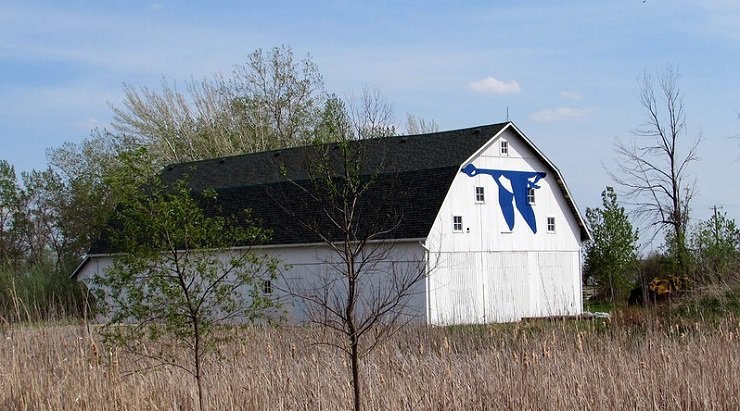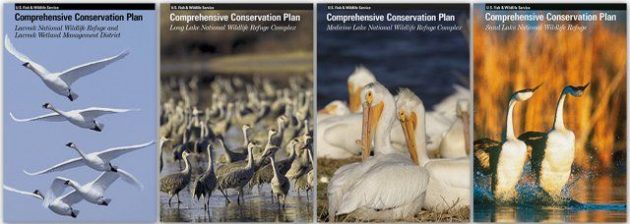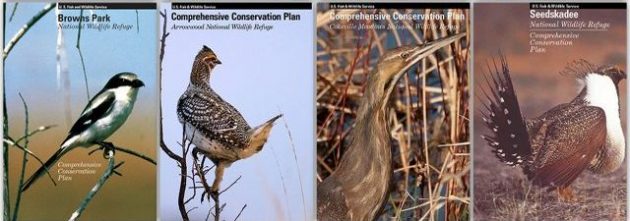
To learn more about one’s favorite National Wildlife Refuge, the first steps are to visit the refuge and its website (and its Friends group website, if any). But one way less obvious way to learn a great deal about a specific refuge is to locate and read its Comprehensive Conservation Plan (CCP).
Some background is required: The National Wildlife Refuge System Improvement Act of 1997 overhauled the laws governing the Refuge System and one provision of that Act required CCPs. Each refuge (or group of refuges managed as a single unit) must develop a CCP that in turn guides refuge planning. (NWRs in Alaska are governed by their own rules.)
According to the U.S. Fish & Wildlife Service (FWS), which runs the National Wildlife Refuge System: “The purpose of developing the CCP is to provide the refuge manager with a 15-year management plan for the conservation of fish, wildlife, and plant resources and their related habitats, while providing opportunities for compatible wildlife-dependent recreational uses.”
FWS is a federal agency, so naturally it has issued detailed regulations regarding how a CCP is developed, contents of the plan, and public notice requirements, among many other requirements. FWS must coordinate with state and local governments, as well as other federal agencies, Indian Tribal Governments, and nonprofit organizations. There’s even an entire handbook dedicated to preplanning.

The regulations require consideration of a range of alternative management plans and the selection of one of those alternatives. The process also includes complying with the National Environmental Policy Act (NEPA) and typically results in an Environmental Assessment (EA). The creation of a CCP is a major undertaking for the refuge staff and there are many opportunities for public involvement.
Virtually all refuges have issued a CCP and most are several hundred pages that set forth, among other things, the history of the refuge, an inventory of its plants and wildlife, the status of refuge lands and infrastructure, conservation plans, and opportunities for compatible wildlife-dependent recreational uses. The CCP also identifies challenges, whether endangered species, invasive plants, fish, or animals, pollution from adjacent lands, encroaching development, or any number of others.
Because many NWRs were established to protect migratory birds, many CCPs include extensive discussions about bird populations, habitat, and conservation measures. These are not short breezy documents intended for pleasure reading. Rather, they are written to include certain mandated information and they are drafted by committee. As a result, they are read for their information not their prose.
Unfortunately, there is no central online repository of all CCPs for the National Wildlife Refuge System. But most can be located via any search engine using the name of the refuge name and “Comprehensive Conservation Plan” or “CCP” as search terms.
Such searches will generally lead to a FWS web page containing a PDF of the CCP, such as this one for Ottawa NWR in Ohio. However, some refuges are part of the larger refuge “complex” that includes several refuges that are managed together, so finding a specific CCP can occasionally be a challenge. For example, a single CCP for the Willamette Valley NWR Complex covers three refuges in Oregon (Ankeny, Baskett Slough and William F. Findley NWRs) and it is here.

A CCP is a wealth of information regarding a specific refuge. A good example is the CCP for Malheur NWR in Oregon. With all of its tables and appendices, it is a 779-page document, but there is a 39-page executive summary and a detailed table of contents. A brief review of the Malheur CCP provides insight on the information in other CCPs.
The Executive Summary sets forth a concise overview of the CCP, including goals (enhance aquatic health and habitat, protect and rehabilitate riparian habitats, etc.) and management issues (invasive species, habitat management, visitor access, etc.). This is obviously the place to start.
Chapter 1 (“Introduction and Background”) addresses purposes of the refuge, status of lands, and planning process. It also addresses the history of Malheur NWR and its significance to migrating birds. Chapter 2 (“Management Direction”) discusses management goals, objectives, and strategy. Chapter 3 (“Physical Environment”) covers land, hydrology, topography, soils, fire, and pollution, among other things. Chapter 4 (“Biological Environment”) addresses habitats, animal species, threatened and endangered species, invasive species, and habitat monitoring. Chapter 5 (“Human Environment”) includes cultural resources, facilities, and wildlife-dependent public uses.
The CCP concludes with many maps, figures, tables, and appendices. The maps include the location of the refuge, facilities, land cover/habitat, watersheds, hydrologic systems, historic sites, and boundaries. The figures include temperature and rainfall, shorebird counts, and refuge visitation. The tables include acreage by type of acquisition, priority resources, federally listed species on or adjacent to the refuge, biological surveys, and local population characteristics. The appendices are numerous.
* * *
For those interested in learning more about a specific National Wildlife Refuge, the CCP is an excellent resource. Most can be readily located online and a PDF can be downloaded for reading when convenient. They are an excellent way to learn about a National Wildlife Refuge and its specific challenges and opportunities.
This post was originally published on August 22, 2016, and has been updated.
Photo: Ottawa NWR by Jason Crotty.











Leave a Comment